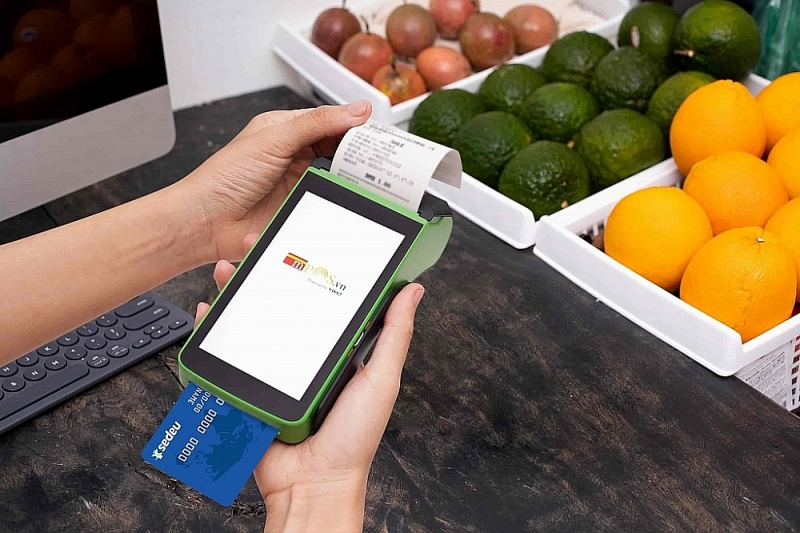 |
| Cashless payments increased sharply, while ATM withdrawals decreased by nearly 10%. |
According to representatives of leaders of banks, since the beginning of 2020, the Covid-19 pandemic has strongly affected the transaction scale at the bank’s transaction channels.
Customers have also changed the way they use payment means, limiting cash spending, focusing on non-cash payments, and especially prioritizing online payments.
For example, Nguyen Thi Kim Oanh, Deputy General Director of Vietcombank, said that in 2021, the transaction scale through Vietcombank’s digital platforms grew by 62.5% in terms of transaction volume and nearly 30% in transaction value compared to 2020, equivalent to about 1.5 million online transactions per day on average.
Non-cash payment methods are also promoted by customers, especially the QR code payment method with the total QR payment scale in 2021 equal to 213% compared to 2020. The scale of customers using Vietcombank’s online services increased by 39% compared to the end of 2020; the ratio of customers using online services compared to the total number of Vietcombank’s customers reached 36%.
For domestic card transactions, cash withdrawal sales decreased and card payment sales at Vietcombank’s network of card payment units increased by 25% compared to the same period last year.
According to NAPAS statistics, continuing the growth momentum of the past two years, in the first quarter of 2022, payment activities through the NAPAS network increased by 89% in terms of transactions and 123% in value compared to the first quarter of 2021. In which, cash withdrawals via ATM tend to decrease (-9.6%) in quantity and (-8.8%) in transaction value compared to the same period in 2021.
Le Anh Dung, Deputy Director in charge of the Payment Department (SBV) said that this unit has implemented many solutions to promote non-cash payment. Such as building a legal framework, mechanisms and policies to create favorable conditions for the development of non-cash payments, promoting payment for public services; at the same time, promoting credit institutions and payment organizations to apply technology to provide a variety of non-cash payment products and services; promoting the cooperation between banks and Fintech companies to provide convenient services for customers on smartphone applications.
Therefore, banks and related companies and organizations are actively developing diverse products and services to meet customer needs. Non-cash payment methods in Vietnam are increasingly diversified, from payment by bank card to online payment via electronic channels such as Digital Banking, Internet Banking, Mobile Banking, SMS Banking, and e-wallets.
According to Phan Thi Thanh Ha, Deputy Director of Agribank Card Center, in order to increase people’s access to bank capital as well as modern and civilized payment services, Agribank has recently implemented many policies to encourage customers to transact on electronic channels as well as provide many products and services using technology to meet the needs of customers.
On the other hand, payment technologies are also increasingly modern. Bank card products are not in the traditional method of swiping or putting the card into the card reader slot, but now just need to “touch” to pay. In addition, banks also deploy payment methods on mobile applications such as QR Pay two-dimensional barcode, and payment on mobile devices using NFC short-range wireless transmission technology.
Banks have also actively coordinated with Tax, Customs, State Treasury, and public administrative units to effectively implement the collection and payment of State Budget, taxes, fees and expenditures by convenient modern payment methods.
 | Customs continues to facilitate import and export activities at Northern border gates |
Banks even create diverse payment ecosystems to meet the needs of customers, from education, healthcare, electricity, water, and telecommunication to restaurants, hotels, tourism, entertainment, shopping, transportation, insurance, securities and petrol.
